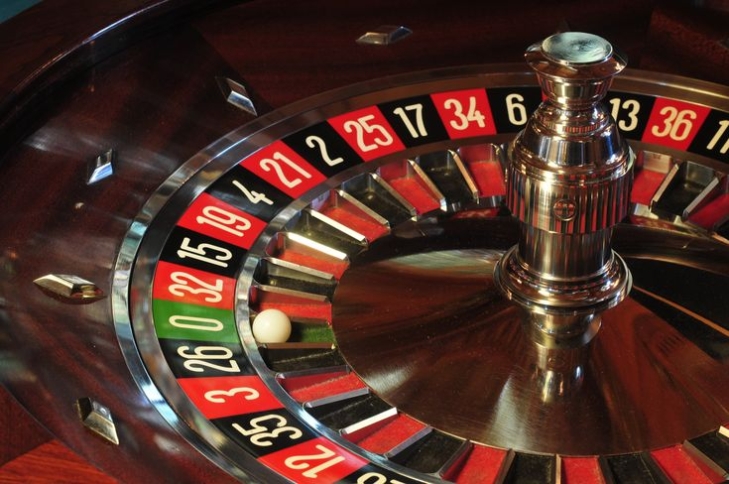Warning: Attempt to read property "params" on null in /home/notinhal/public_html/plugins/k2/k2canonical/k2canonical.php on line 382
Beating the Wheel: Proven Roulette Systems to Win at the Table
Learn about effective roulette betting strategies like the Martingale, D’Alembert, and Fibonacci systems that can help you beat the house edge and win over the long run.
Beating the Wheel: Proven Roulette Systems to Win at the Table
The spinning roulette wheel entices gamblers with the promise of a big 35:1 payout on a single number bet. However, the house edge gives the casino better odds over the long run. Savvy players have developed roulette betting strategies to flip the odds in their favor. Systems like the Martingale, D’Alembert, and Fibonacci use clever progression tactics to capitalize on winning streaks. When used correctly, these proven Spin Online Casino roulette strategies can help you beat the house.
Understanding the Roulette House Edge
Before employing a betting system, players need to understand the built-in casino advantage. In European roulette, there are 37 numbered pockets (1-36, plus 0). That extra pocket gives the house a 2.7% edge on all bets. So over time, the casino will win 2.7 cents for every dollar wagered. American roulette boosts that edge up to 5.26% with the extra 00 pocket. Skillful application of a smart betting strategy can overcome that house edge.
The Risks and Rewards of Progression Systems
Progression betting systems change wager sizes based on previous outcomes. The goal is to lock in profits after wins and recoup losses after defeats. This allows players to capitalize on lucky streaks. However, extended losing runs can quickly drain a gambling bankroll. Proper bankroll management and knowing when to stop are key to making these systems work. Here are three of the best roulette progression strategies.
Table 1. Common Roulette Betting Systems
|
System |
How It Works |
Risk Level |
|
Martingale |
Double bet after losses |
High |
|
D’Alembert |
Increment bet by 1 unit after losses |
Low |
|
Fibonacci |
Increase bets using Fibonacci sequence |
Moderate |
The Martingale System
Of all the betting systems for casino games, the Martingale is likely the most famous. To use this system at roulette tables:
- Bet one base unit on even money outside bets like red/black, even/odd, or 1-18/19-36.
- If you win, bet one base unit again.
- If you lose, double the bet size. So if your base unit is $5, you would wager $10 after the first loss.
Keep doubling the bet after each loss. When you finally win, go back to the starting $5 wager. The key is that a single win will recoup all previous losses plus win the original base unit.
The downside is that losing streaks will rapidly deplete your bankroll. Set a loss limit before starting to play.
The D’Alembert Roulette Strategy
The D’Alembert system takes a safer approach to roulette progression betting. Instead of aggressive martingale-style doubling, wager sizes increase incrementally after losses:
- Start with one unit on an even money roulette bet.
- If you win, deduct one unit. If you lose, add one unit.
- After each subsequent win, decrease the wager by one unit. After losses, increase by one unit.
With smaller bet increments, bankrolls last longer. This allows the system to capitalize through larger sample sizes of spins. The downside is that recouping losses requires longer winning streaks. Players also reach the table betting limit more quickly.
The Fibonacci Betting System
Like the D’Alembert, the Fibonacci avoids aggressive doubling in favor of incremental scaling. The wager progression looks like this:
1-1-2-3-5-8-13-21-34
The sequence increases bets by the sum of the previous two numbers. So after two losing spins, you would wager three units. After three losses, five units. Then eight, 13, 21.
This creates a nice balance – quickly ramping up bet sizes while avoiding huge jumps that will drain a bankroll. The downside is the rapid wager increases towards the end of the sequence. Set loss limits before approaching the 13+ unit bets.
Other Roulette Betting Strategies
While progression systems attract the most attention, there are several other ways to flip the roulette odds in your favor:
- Betting on “Orphans” – Wagering on orphan bets like 0+1-1-2-3 pays out 17:1 and carries a lower house edge than straight up numbers.
- Biased Wheel Tracking – If you can detect tiny imperfections in wheel spins, you can spot biased numbers with higher payout odds. This takes lots of observation and tracking.
- Software Programs – Many programs like Roulette Number Tracker scout biases and calculate smart bet types/locations based on previous spin data. They carry a price tag but work for online play.
Conclusion
The bottom line is that roulette betting systems allow strategic players to push the odds back closer to even. Progression tactics capitalize on streaks while mitigating losses during colder periods by adjusting wager sizes. Combining these proven roulette strategies with game knowledge, practice, and discipline is the key to beating the house in the long run. Just realize that no system is foolproof. Even with the best strategies, big losing streaks can occur. Know when to stop and stick to loss limits before trying to recoup it all back.


